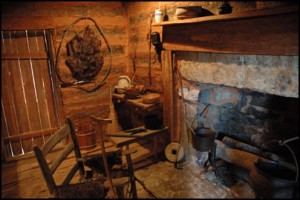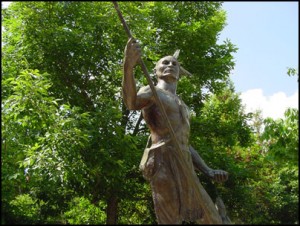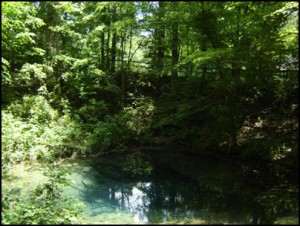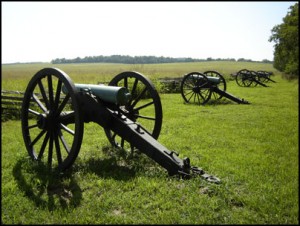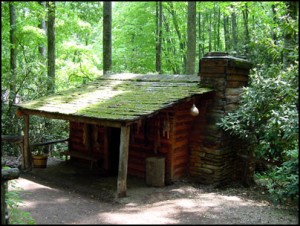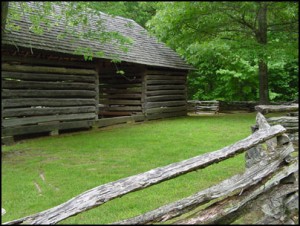Sequoyah was born in the 1770s in the Cherokee village of Tuskegee on the Tennessee River. His name Sikwo-yi is Cherokee for “pig’s foot,” which leads many to believed that he was crippled. Sequoyah was a mixed-blood Cherokee. His mother, Wureth, was a member of the Paint Clan. His father, Nathaniel Gist, was a Virginia
Cherokee Genealogy Queries Posted December 0
Ross Landing
Chattanooga, the 4th largest city in Tennessee with over 155,000 residents, has its roots in Cherokee history. In 1776, Dragging Canoe and the Chickamauga settled here at the foot of Lookout Mountain. Then in 1816, John Ross, later elected Prinicipal Chief, established a trading post here and the spot soon became known as Ross’s Landing.
Red Clay State Historic Park
In 1830 the US Congress, at the behest of President Andrew Jackson, passed the “Indian Removal Act.” With this act, the US intended to removal all Indian people to Indian Territory, land west of the Mississippi River. Removal was “voluntary” in as much as the US government had to arrange removal by way of a
Pea Ridge National Military Park
The Battle of Pea Ridge, March 7 & 8, 1862, was the first battle of the Civil War in which Indian troops participated. About 1,000 Cherokee, the 1st and 2nd Cherokee Mounted Rifles, fought for the Confederate Army led by Brigadier General Albert Pike. During the battle, these two Cherokee regiments routed two companies of
Oconaluftee Indian Village
The Oconaluftee village was opened in 1952 as a living history museum of Cherokee culture operated by the Cherokee Historical Association. It functions as an authentic replica of a Cherokee village circa 1750. Cherokee crafts people demonstrate traditional Cherokee arts and methods of survival, including: basket weaving, blowgun shooting, arrow making, and even how canoes
Cherokee Female Seminary Columns
Just ten years after the Cherokee Nation was relocated to Indian Territory on the Trail of Tears, the Cherokee had made great strides in rebuilding the tribal infrastructure. In 1849, the Cherokee National Council turned their attention to education. The Council allocated the funding needed to build two non-denominational, secondary boarding schools – the Male
The Passage
The Passage is a pedestrian link between downtown Chattanooga and the Tennessee River at Ross’s Landing (the city’s original settlement, named for the Cherokee Chief John Ross). The project is the nation’s largest public art project celebrating Cherokee history and culture. The piece, created by Cherokee Artists Gadugi (Cherokee Artists Working Together) of Oklahoma, was
Nancy Ward’s Gravesite
Nancy “Nanye-hi” Ward was a Cherokee woman born in the late 1730s in the Cherokee town of Chota. She was the niece of leader Attakullakulla and cousin of war leader Dragging Canoe. In 1755, Nanye-hi, still just a teenager, was married to Kingfisher and fighting side-by-side with her husband at the Battle of Taliwa against
New Echota
The city of New Echota was established in 1825 as the capital of the Cherokee Nation and it would remain so until 1838, at which point the Cherokee Nation capital moved to Indian Territory with the Trail of Tears. Yet, despite its short history, this city witnessed many significant events. New Echota was, in many
Lookout Mountain
At Chattanooga the Cumberland Mountains and Tennessee River meet in a dramatic landscape of towering cliffs and valleys. It was this very aspect of the landscape which appealed to Dragging Canoe. An outspoken opponent of colonial encroachment on Cherokee land, Dragging Canoe found himself at odds with much of the Cherokee Nation who were less
